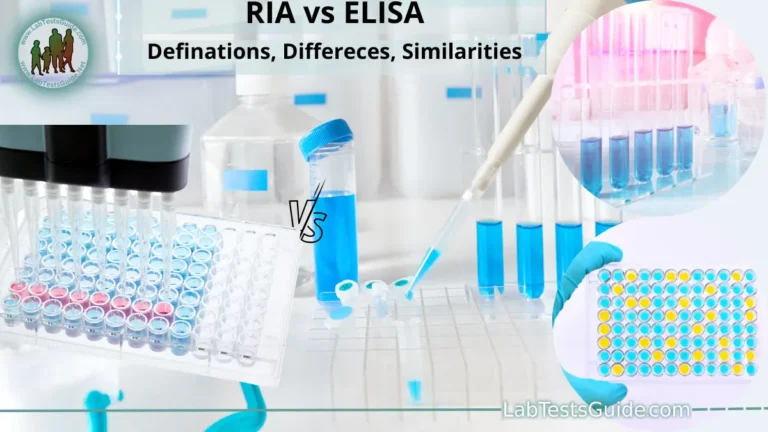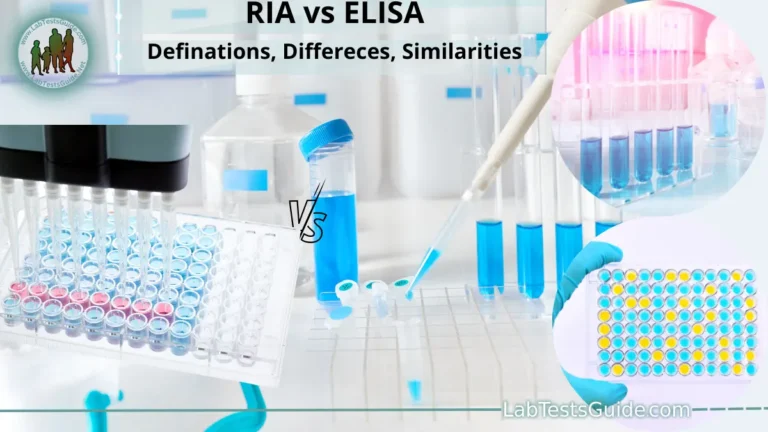Calcitonin and procalcitonin are both hormones that are related to calcium metabolism, but they have different functions in the body. Calcitonin is a hormone that is produced by the thyroid gland and helps to regulate the levels of calcium in the blood by promoting the uptake of calcium by the bones. Procalcitonin, on the other hand, is a precursor to calcitonin and is produced by the thyroid and other tissues in response to inflammation or infection. High levels of procalcitonin in the blood are often used as a marker of bacterial infection.

Definations:
Calcitonin:
Calcitonin is a hormone that helps regulate the levels of calcium in the blood by promoting the uptake of calcium by bones. It is produced by the thyroid gland and acts to lower blood calcium levels.
Procalcitonin (PCT):
Procalcitonin is a precursor to calcitonin, it is a biomarker produced by the body in response to bacterial infection or inflammation. Its level in blood is often used as an indicator of bacterial sepsis. It is produced by various tissues including thyroid, lung, and leukocytes.
List of Differences:
- Production: Calcitonin is produced by the thyroid gland while procalcitonin is produced by the thyroid and other tissues in response to inflammation or infection.
- Function: Calcitonin helps to regulate the levels of calcium in the blood by promoting the uptake of calcium by the bones. Procalcitonin is a biomarker that is produced in response to bacterial infection or inflammation.
- Role in the body: Calcitonin acts to lower blood calcium levels while procalcitonin is used as an indicator of bacterial sepsis.
- Measurement: Calcitonin and procalcitonin levels can be measured through a blood test.
- Clinical use: Calcitonin is used to treat conditions such as hypercalcemia and osteoporosis. Procalcitonin is used as a biomarker to help diagnose and monitor bacterial infections.
- Levels: Calcitonin levels are not affected by bacterial infections while procalcitonin levels can be elevated in bacterial infections.
- Location of production: Calcitonin is mainly produced by the C-cells of the thyroid gland, while Procalcitonin is produced by various tissues including thyroid, lung, and leukocytes.
Table of Differences:
| Characteristics | Calcitonin | Procalcitonin |
|---|---|---|
| Production | Calcitonin is produced by the thyroid gland | Procalcitonin is produced by the thyroid and other tissues in response to inflammation or infection |
| Function | Calcitonin helps to regulate the levels of calcium in the blood by promoting the uptake of calcium by the bones | Procalcitonin is a biomarker that is produced in response to bacterial infection or inflammation |
| Role in the body | Calcitonin acts to lower blood calcium levels | Procalcitonin is used as an indicator of bacterial sepsis |
| Measurement | Calcitonin levels can be measured through a blood test | Procalcitonin levels can be measured through a blood test |
| Clinical use | Calcitonin is used to treat conditions such as hypercalcemia and osteoporosis | Procalcitonin is used as a biomarker to help diagnose and monitor bacterial infections |
| Levels | Calcitonin levels are not affected by bacterial infections | Procalcitonin levels can be elevated in bacterial infections |
| Location of production | Calcitonin is mainly produced by the C-cells of the thyroid gland | Procalcitonin is produced by various tissues including thyroid, lung, and leukocytes |
FAQs:
Q: What is the main difference between calcitonin and procalcitonin?
A: Calcitonin is a hormone produced by the thyroid gland that helps regulate the levels of calcium in the blood by promoting the uptake of calcium by the bones. Procalcitonin, on the other hand, is a precursor to calcitonin and is produced by the thyroid and other tissues in response to inflammation or infection.
Q: What is the function of calcitonin?
A: The main function of calcitonin is to lower blood calcium levels by promoting the uptake of calcium by the bones.
Q: What is the function of procalcitonin?
A: The main function of procalcitonin is as a biomarker, it is produced by the body in response to bacterial infection or inflammation and its level in blood is often used as an indicator of bacterial sepsis.
Q: How are calcitonin and procalcitonin measured?
A: Calcitonin and procalcitonin levels can be measured through a blood test.
Q: What are the potential uses of calcitonin and procalcitonin?
A: Calcitonin is used to treat conditions such as hypercalcemia and osteoporosis. Procalcitonin is used as a biomarker to help diagnose and monitor bacterial infections.
Possible References Used







